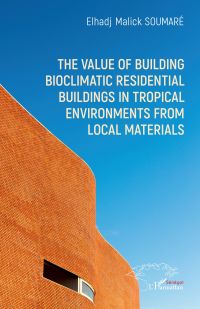The value of building bioclimatic residential buildings in tropical environments from local materials
Éditeur : Harmattan
ISBN numérique PDF: 9782336426198
Parution : 2024
Catégorisation :
Livres numériques /
Autre /
Autre /
Autre.
Formats disponibles
| Format | Qté. disp. | Prix* | Commander |
|---|---|---|---|
| Numérique PDF Protection filigrane*** |
Illimité | Prix : 46,71 $ |
*Les prix sont en dollars canadien. Taxes et frais de livraison en sus.
***Ce produit est protégé en vertu des droits d'auteurs.
Description
This book, aimed at Engineers, Architects, Building Technicians, and Students, offers a crucial insight into bioclimatic building construction in Tropical Africa. It addresses the common oversight of climatic characteristics in building design, emphasizing the need to consider weather conditions, especially in warm periods. The book analyzes current housing, compares it with vernacular and colonial models, and proposes bioclimatic designs using passive architectural techniques.
A key model involves a mathematical analysis of complex admittances, considering local materials like hollow blocks, BTCS, terracotta bricks, laterite stones, granite rubble, and vibrated mortar tiles. Combined with passive techniques, this forms a bioclimatic building model tailored to dry tropical climates.
The author, in accessible language, advocates for promoting locally available materials as alternatives to conventional ones, anticipating potential shortages in building aggregates in tropical African countries.























